Janaya Khan on Black Lives Matter and the Art of Resistance
"When I think back to some of the greatest moments in Black resistance, art is the anchor," writes Janaya Khan, co-founder of Black Lives Matter – Toronto, in this powerful essay on the politics of art
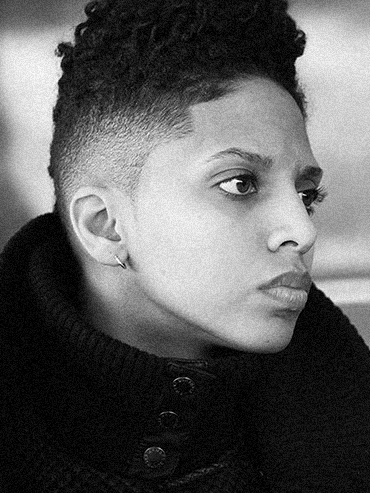

Black Lives Matter—a hashtag turned international movement largely led by women—is known in one breath as the new Civil Rights movement and in another as a terror group, despite the fact that our work is centred on demanding life and longevity for Black people. It has come to mean many things to many people, but for me, Black Lives Matter is my movement home. And what is a home without art?
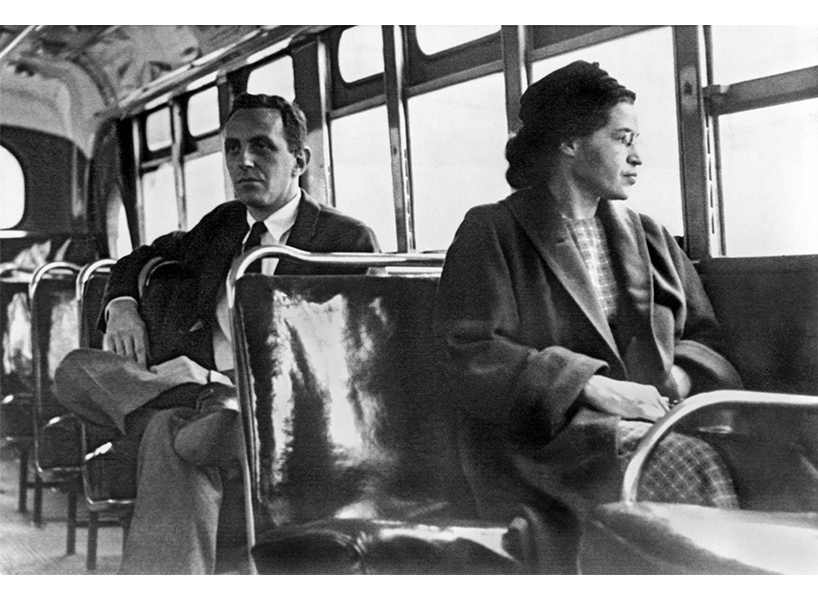
When I think back to some of the greatest moments in Black resistance, art is the anchor. The iconic depictions of Rosa Parks refusing to give up her seat on a city bus in Alabama, Emory Douglas’s unforgettable prints in The Black Panther newspaper that traveled the world over, the photographs of police swinging batons and gripping leashes of snarling dogs lashing out at Black people dressed in their Sunday best in Selma.
Art finds moments of truth in chaos. It reveals new information worthy of transmission to those of us who did not inherit wealth, but instead inherited purpose. Art has been a chronology of tactics for Black Lives Matter, delving deeply into the human condition. The writings of Mumia Abu-Jamal, the poetry of Assata Shakur, the visions of Ella Baker and Marsha P. Johnson and Fannie Lou Hamer have provided a blueprint for a new generation of artists in and around the movement.
Protest is performance art.
The ability to facilitate spectacle and intervention is the work of artists. Banners, signs, clothing, formations, speeches and locations are parts of the installation. One of the greatest criticisms of our movement has been our tactics; we were told that protests, rallies, and shutdowns undermined our message.

But protest has always acted as a barometer for change. In the last three years, our work set the stage for actions like the Women’s March and the even more recent airport shutdowns protesting the Muslim travel ban in the U.S.
Last year commemorated the 50th anniversary of the founding of the Black Panther Party. I sat on a panel with some giants including Trudy Goodwin, a former Black Panther member, and Sadie Barnette, daughter Rodney Barnette. Rodney founded the Black Panther Party’s Compton, California chapter in 1968. Sadie spoke of how she transformed the 500-page FBI surveillance file on her father into a multimedia project called Do Not Destroy, her first solo exhibition in New York City. Sadie exposed hard truths in sharing the FBI’s dossier, which includes redacted names of informants and other handwritten notes, and added black and pink spray paint, rhinestones and glitter of her own to the documents to leave her lasting mark.
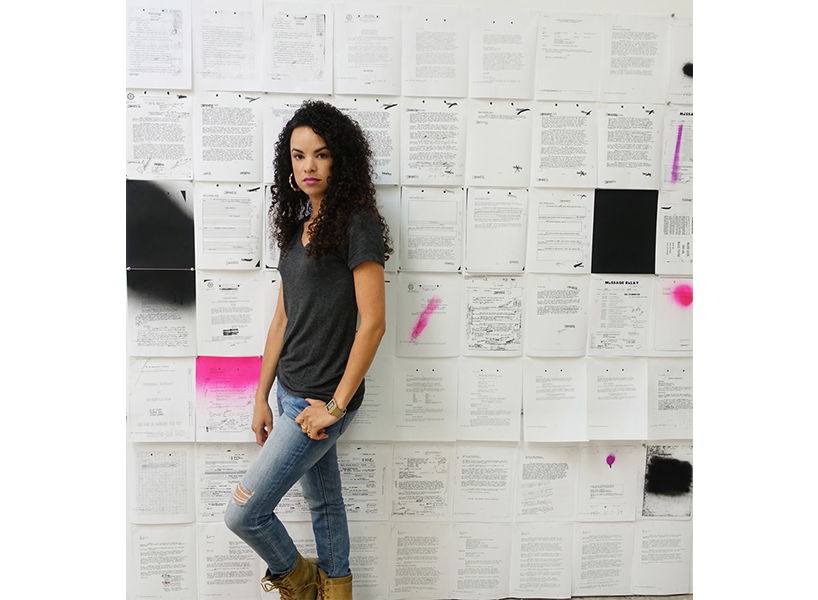
During the panel discussion, we also explored the reality of two kinds of art: the art that affirms the status quo and the art that challenges it. Black Lives Matter – Toronto’s 2016 Pride sit-in is a prime example of the latter. Gold and black costumes, custom capes and kente cloth covered coffins in a ceremonious funeral procession organized and led by Black people as we marched in the parade. Then, for our sit-in we used a smoke screen to safely allow people to block off the intersection. We made our list of demands known, including American sign language (ASL) interpretation for every stage, the redistribution of funding and removal of police floats and booths in the parade. Police brutality has long been the Black experience in Canada. Using our art, our action changed the discourse of public safety in the country and inspired people of colour to re-invest in Pride Toronto, most apparent in the changes to their board, general membership and the approval of our demands.
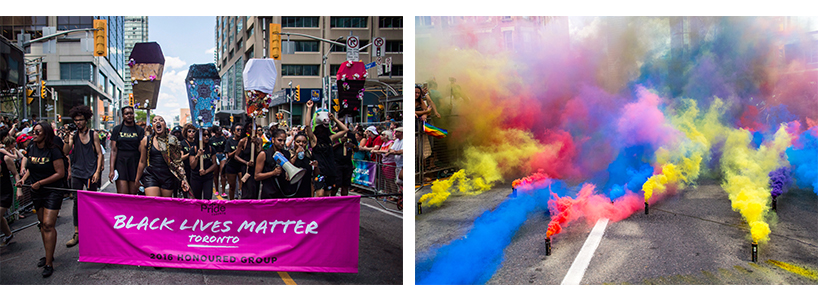
Art is a key element of the Freedom School—spearheaded by LeRoi Newbold—one of the most impactful initiatives in Black Lives Matter. The three-week Toronto-based summer program for children aged four to 10 focuses on Black history; our lead organizers collaborate with local artists to create puzzles, dolls and drawings as part of the curriculum. Spending time making art and storytelling with children was a highlight of mine when the program launched in July 2015.
When I think about art in this context, I also recall the mural made in Ottawa celebrating Sandra Bland, a 28-year-old Black woman who died in a jail cell after being wrongfully arrested in Waller County, Texas. Within hours of its creation, some people defaced the mural and spray-painted “all lives matter” across it in an effort to attack Black Lives Matter. But the artists, Kalkidan Assefa and Allan Andre, would not be thwarted and restored the mural immediately.
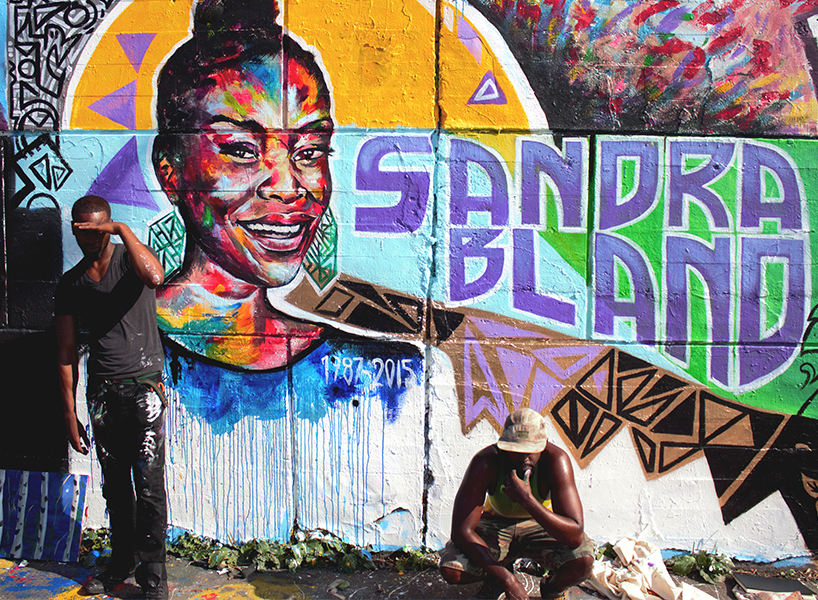
Art must be firmly connected to the world; it must tell the untold stories, it must tell the truth. In this time of “alternative facts” and emboldened white nationalists across North America, telling the truth is one of the most radical acts of resistance we have. Art is a moral compass, and when we are headed in the wrong direction, art should be loud, it should be provocative, it should disturb the peace. Art is always political in this way.
Black Lives Matter is a movement of artists—we know the risks, we know the greatest danger to us all is silence in the face of injustice. Toni Cade Bambara says, “The role of the artist is to make the revolution irresistible.”
We intend to do just that.
Janaya Khan is a lecturer, author and co-founder of Black Lives Matter – Toronto.
Related:
Meet Janaya Khan, Co-Founder of Black Lives Matter – Toronto
The Black Activist Exhibit You Need to See
Fashion is Embracing Natural Black Hair: Why It Matters
The Gucci Pre-Fall 2017 Campaign Might Feature All Black Models








